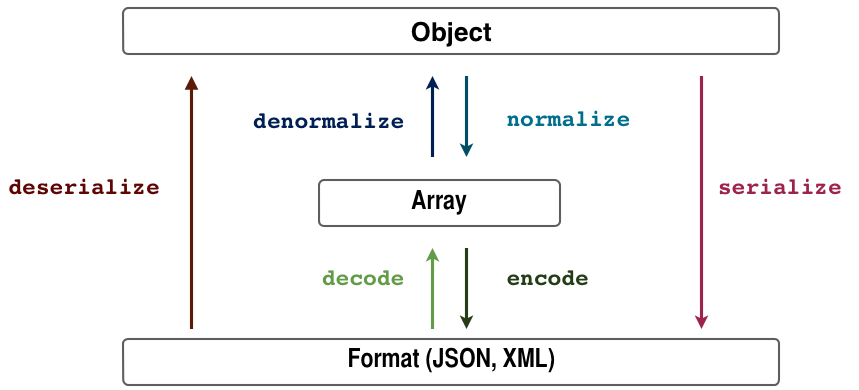The code makes a StringWriter object so it can serialize into a string. You could serialize into other stream objects such as file streams if you want. The code calls the serializer's Serialize method, passing it the stream to serialize into (the StringWriter) and the Person object to serialize. In this article we are going to see how to serialize and deserialize an object as XML data. Learn Flutter Step By Step. Why Join Become a member Login C# Corner. The article talks about serialization of objects in XML format and deserialization of an XML file back to an object. Serialization is a process by which an object's state is transformed in some serial data format, such as XML or binary format. Deserialization, on the other hand, is used to convert.
There are many ways to serialize data; you can serialize info into and from the registry; you can store and load info from a database, or from a file. Hannes du Preez shows you how to save info to an XML file and load it from that XML file. The following is the XML file (Override.xml) generated and used for the serialization and de-serialization in this project The following program examples provide code that performs XML serialization on a variety of classes: a simple class, one with XML attributes applied, and one that overrides serialization. Serialization is the process of converting an object into a stream of bytes. In this article, I will show you how to serialize object to XML in C#. XML serialization converts the public fields and properties of an object into an XML stream. Open Visual Studio. Go to File-New-Project, Choose Console Application. Making an Object Serializable. To serialize an object, you need the object to be serialized, a stream to contain the serialized object, and a Formatter. System.Runtime.Serialization contains the classes necessary for serializing and deserializing objects.
The xml file should like this after I serialize and then I want to deserialize this in vb.net. I am a begginer in programming. Any help is appreciated.
Neolisk
1 Answer
I'd advise you to definitely look into XML serialization. A lot of information can be found on MSDN (but also using any search engine). For example on MSDN: Introducing XML Serialization.
If you have nothing yet, for code. I would keep it very simple to deserialize the given XML structure. You can create a simple class definition for a Country, as shown below:
Now this doesn't work yet 100%. You have to help the serialization object with the list of states. You can annotate (with attributes) the States, so the serializer knows that each item is named differently (default it would be <string>item</string>). You can use the XmlArrayItem attribute for this.
Finally, for deserialization. I'd deserialize to a List(Of Country), as it clearly is a list. (Assuming the above XML is stored in a file 'obj.xml'.)
Now we still have to help the serializer object, because otherwise it doesn't know how to deserialize the given XML; as it doesn't determine the root node correctly. We can use an overload of the constructor here, in which we can say what the root node is (XmlSerializer Constructor (Type, XmlRootAttribute)).
Final code for deserialization would be:

Code for serialization (writing to file 'obj.xml'):
All this could have been found quite easily by searching and reading the documentation.
Vb.net Serialize Object To Xml
StyxxyStyxxyNot the answer you're looking for? Browse other questions tagged xmlvb.netserialization or ask your own question.
-->To serialize an object, first create the object that is to be serialized and set its public properties and fields. To do this, you must determine the transport format in which the XML stream is to be stored, either as a stream or as a file. For example, if the XML stream must be saved in a permanent form, create a FileStream object.

Note
C# Serialize To Xml File
For more examples of XML serialization, see Examples of XML Serialization.
To serialize an object
Create the object and set its public fields and properties.
Construct a XmlSerializer using the type of the object. For more information, see the XmlSerializer class constructors.
Call the Serialize method to generate either an XML stream or a file representation of the object's public properties and fields. The following example creates a file.
Comments are closed.